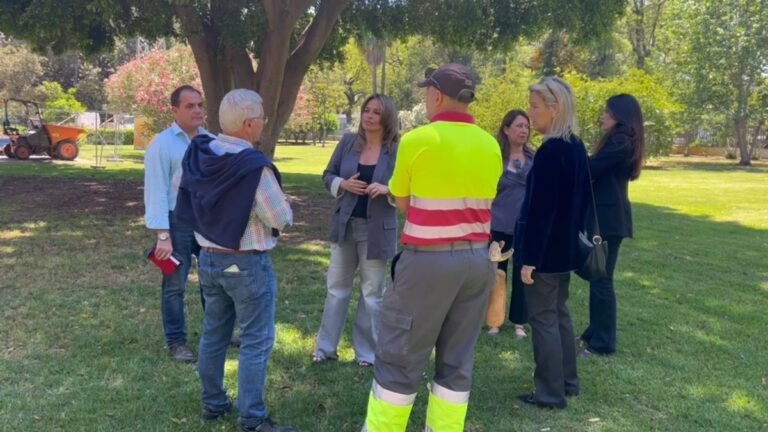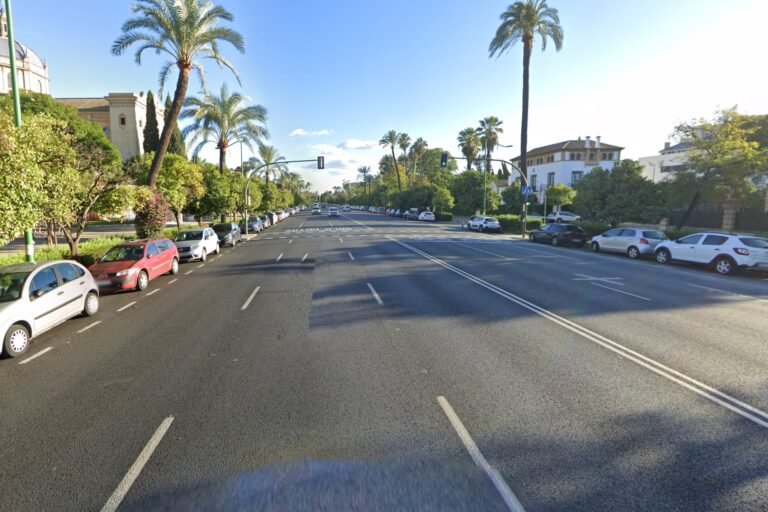
Rewrite
The Zóñar, Amarga, and Rincón lakes, located in the heart of southern Córdoba, have renewed their recognition as internationally important wetlands thanks to the recent publication in the Official State Gazette (BOE) updating their Ramsar sheets. This step reinforces Andalusia’s role in the conservation of unique natural spaces and consolidates the province of Córdoba as a reference in the protection of water-related ecosystems.
The technical review of these three wetlands in Córdoba includes updated ecological, cartographic, and geomorphological information, with special attention to their biodiversity and the essential role they play as a refuge for waterfowl. This update reflects the commitment of administrations to conservation, based on scientific knowledge and continuous improvement of environmental management.
The work has been driven by the Directorate General of Biodiversity, Forests, and Desertification, within the framework of the Wetlands Committee of the State Commission for Natural Heritage and Biodiversity, in collaboration with the Junta de Andalucía. Inter-administrative coordination has been key to adapting these sheets to the international standards of the Ramsar Convention and facilitating their consultation and application through high-precision digital tools.
Rafael Martínez, the territorial delegate for Sustainability and the Environment in Córdoba, emphasized that «this update allows us to strengthen the protection of the lakes based on scientific knowledge and improve their management in the face of new environmental challenges, such as climate change or biodiversity loss.» In his view, «the lakes of southern Córdoba are a natural heritage of the highest order, and with this review, we take another step in the shared responsibility as a territory in the conservation of Andalusian wetlands.»
The new sheets include a more precise cartographic delimitation, based on high-resolution images, and a detailed review of the ecological values of each area. Collectively, these wetlands house over 200 taxa of flora and fauna, with numerous protected species at the regional, national, and European levels. Notable among them are waterfowl, amphibians, invertebrates, and endemic plant species that make these lakes a unique enclave in the Mediterranean context.
In addition to Zóñar, Amarga, and Rincón, the Ramsar Site ‘Lagunas del Sur de Córdoba’ also includes the temporary lakes Dulce and Santiago, which, although not part of the main core updated in this resolution, complement the ecological richness of the ensemble. These spaces act as true oases of biodiversity in an agricultural environment, contributing to maintaining key ecological processes and promoting species connectivity.
Martínez also highlighted the ongoing work that the Junta de Andalucía has carried out in these lakes through conservation programs, species monitoring, and environmental education. «Our commitment goes beyond meeting international standards; we advocate for active management that involves the public in the defense of natural heritage,» he said.
Investment for the wetlands in Córdoba
In this regard, the delegate of Sustainability and the Environment in Córdoba emphasized the role of the Visitor Center of the Zóñar Lake as a reference space for dissemination, scientific knowledge, and direct contact with nature. From there, guided tours, educational activities, and awareness campaigns are conducted to bring the population closer to the richness and fragility of these ecosystems.
He also noted that the budgets for 2025 include a budget of 1.2 million euros earmarked for the restoration of the wetlands in the lakes of Santiago, Dulce, Zóñar, del General, and La Carrizosa. Additionally, 800,000 euros have been allocated for the restoration of the lakes Amarga, Tíscar, Salobral, and Rincón. He also pointed out that the Ministry of Sustainability and the Environment will allocate over 813 million euros to these policies this year, an increase of almost 6% from the previous year. Of this amount, the province of Córdoba will receive an investment of 45.6 million euros. Furthermore, a Biodiversity Improvement project in Public Forests addressing actions in the lakes of Tíscar, Zóñar, and Jarales is currently being implemented with a value of 315,000 euros.
The update of the Ramsar sheets also facilitates the integration of these wetlands into future ecological restoration strategies, hydrological planning, and adaptation to climate change. With more precise information, protection tools are strengthened, and the capacity to respond to threats such as diffuse pollution, invasive species, or land use pressure is improved.
The technical information and the new maps are available on the BOE portal.
. Exclude references to unrelated pages like privacy policies or cookie policies. Focus solely on the content provided, without adding or inventing new information. Be thorough and ensure the rewritten version is at least 500 words long. Keep headings, keywords, and all structural elements intact to preserve SEO integrity, as well as grammatical issues. Keep the exact anchor texts of the links on
The Zóñar, Amarga, and Rincón lakes, located in the heart of southern Córdoba, have renewed their recognition as internationally important wetlands thanks to the recent publication in the Official State Gazette (BOE) updating their Ramsar sheets. This step reinforces Andalusia’s role in the conservation of unique natural spaces and consolidates the province of Córdoba as a reference in the protection of water-related ecosystems.
The technical review of these three wetlands in Córdoba includes updated ecological, cartographic, and geomorphological information, with special attention to their biodiversity and the essential role they play as a refuge for waterfowl. This update reflects the commitment of administrations to conservation, based on scientific knowledge and continuous improvement of environmental management.
The work has been driven by the Directorate General of Biodiversity, Forests, and Desertification, within the framework of the Wetlands Committee of the State Commission for Natural Heritage and Biodiversity, in collaboration with the Junta de Andalucía. Inter-administrative coordination has been key to adapting these sheets to the international standards of the Ramsar Convention and facilitating their consultation and application through high-precision digital tools.
Rafael Martínez, the territorial delegate for Sustainability and the Environment in Córdoba, emphasized that «this update allows us to strengthen the protection of the lakes based on scientific knowledge and improve their management in the face of new environmental challenges, such as climate change or biodiversity loss.» In his view, «the lakes of southern Córdoba are a natural heritage of the highest order, and with this review, we take another step in the shared responsibility as a territory in the conservation of Andalusian wetlands.»
The new sheets include a more precise cartographic delimitation, based on high-resolution images, and a detailed review of the ecological values of each area. Collectively, these wetlands house over 200 taxa of flora and fauna, with numerous protected species at the regional, national, and European levels. Notable among them are waterfowl, amphibians, invertebrates, and endemic plant species that make these lakes a unique enclave in the Mediterranean context.
In addition to Zóñar, Amarga, and Rincón, the Ramsar Site ‘Lagunas del Sur de Córdoba’ also includes the temporary lakes Dulce and Santiago, which, although not part of the main core updated in this resolution, complement the ecological richness of the ensemble. These spaces act as true oases of biodiversity in an agricultural environment, contributing to maintaining key ecological processes and promoting species connectivity.
Martínez also highlighted the ongoing work that the Junta de Andalucía has carried out in these lakes through conservation programs, species monitoring, and environmental education. «Our commitment goes beyond meeting international standards; we advocate for active management that involves the public in the defense of natural heritage,» he said.
Investment for the wetlands in Córdoba
In this regard, the delegate of Sustainability and the Environment in Córdoba emphasized the role of the Visitor Center of the Zóñar Lake as a reference space for dissemination, scientific knowledge, and direct contact with nature. From there, guided tours, educational activities, and awareness campaigns are conducted to bring the population closer to the richness and fragility of these ecosystems.
He also noted that the budgets for 2025 include a budget of 1.2 million euros earmarked for the restoration of the wetlands in the lakes of Santiago, Dulce, Zóñar, del General, and La Carrizosa. Additionally, 800,000 euros have been allocated for the restoration of the lakes Amarga, Tíscar, Salobral, and Rincón. He also pointed out that the Ministry of Sustainability and the Environment will allocate over 813 million euros to these policies this year, an increase of almost 6% from the previous year. Of this amount, the province of Córdoba will receive an investment of 45.6 million euros. Furthermore, a Biodiversity Improvement project in Public Forests addressing actions in the lakes of Tíscar, Zóñar, and Jarales is currently being implemented with a value of 315,000 euros.
The update of the Ramsar sheets also facilitates the integration of these wetlands into future ecological restoration strategies, hydrological planning, and adaptation to climate change. With more precise information, protection tools are strengthened, and the capacity to respond to threats such as diffuse pollution, invasive species, or land use pressure is improved.
The technical information and the new maps are available on the BOE portal.
, don’t translate or change.
FUENTE






